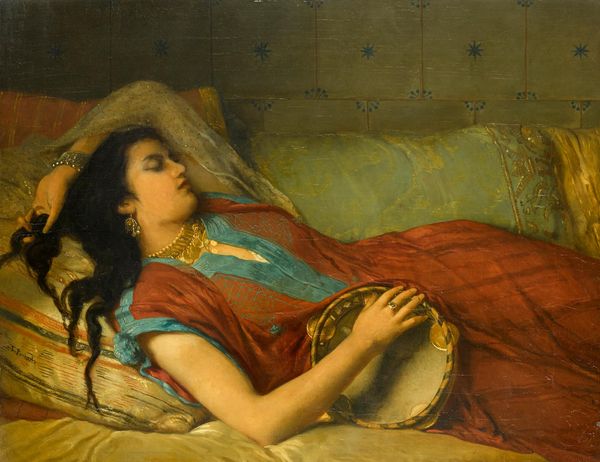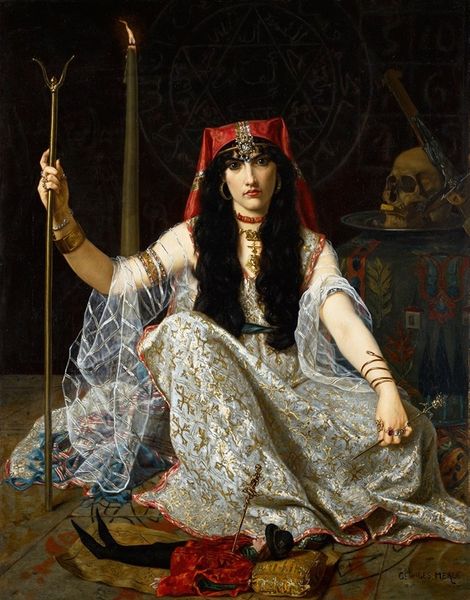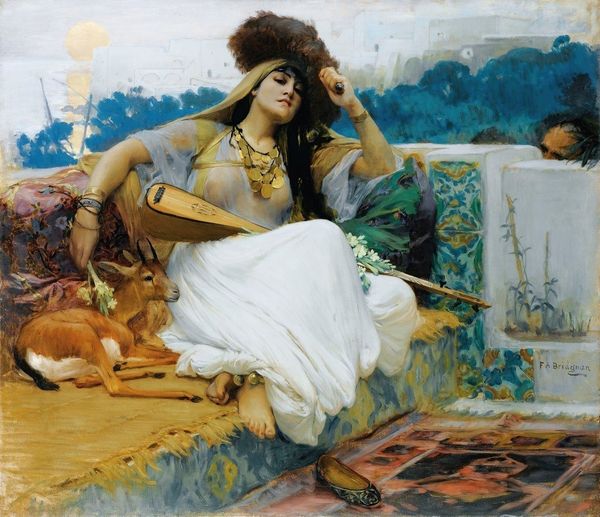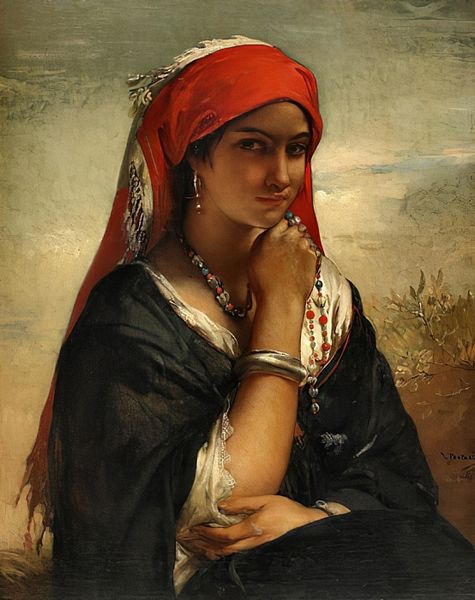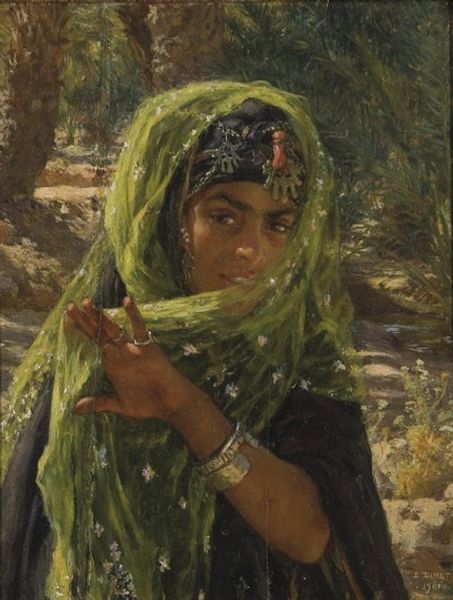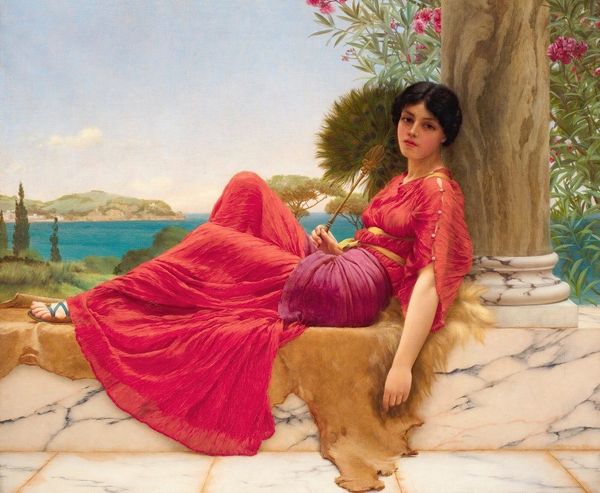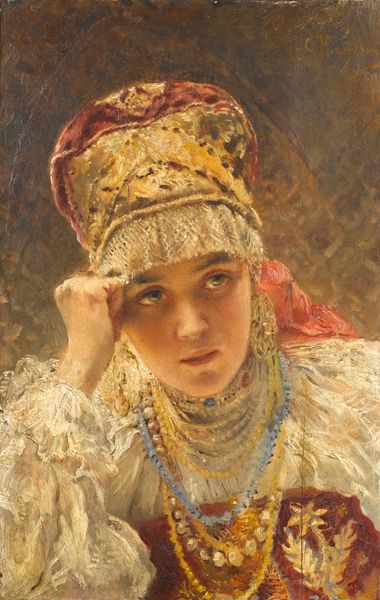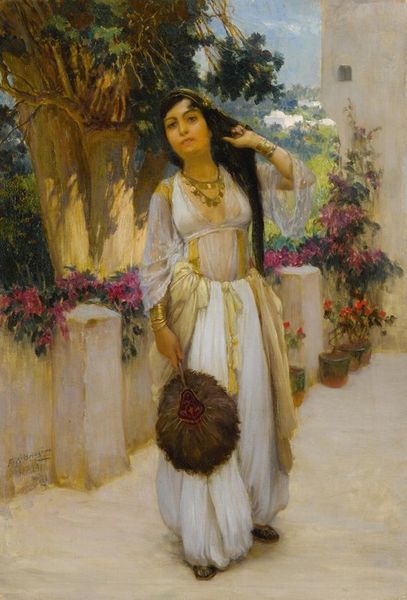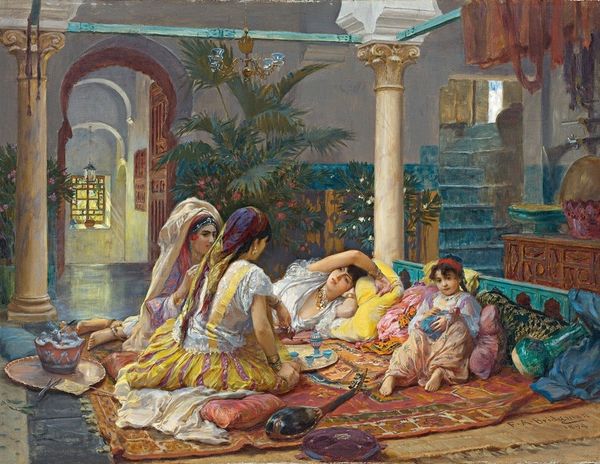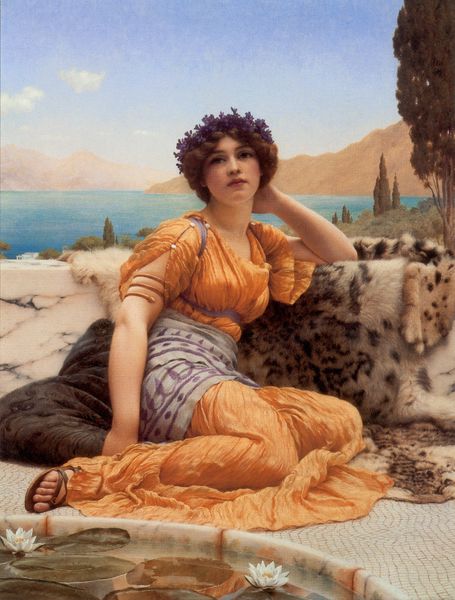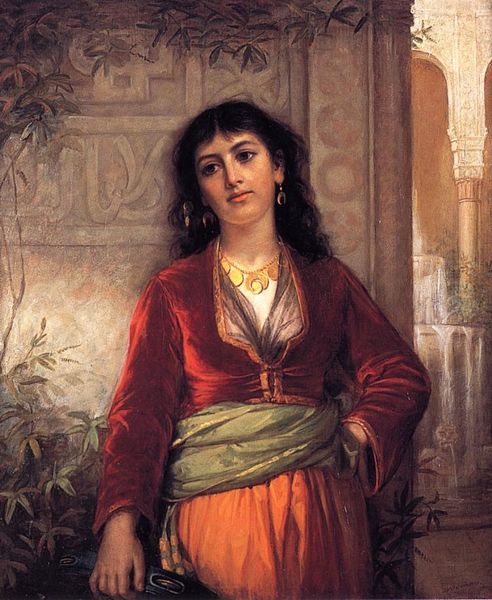
Dimensions: 92 cm (height) x 114 cm (width) (Netto)
Curator: What an amazing composition! "An Egyptian Pot Seller at Gizeh," created by Elisabeth Jerichau Baumann between 1876 and 1878, captivates with its subject's enigmatic gaze. Editor: There’s an almost uncomfortable directness in her eyes, isn't there? She's posed but there is no demureness about it, just a quiet assertion. The whole painting has this strangely serene, heavy feeling. Like the air itself is thick. Curator: That's it! Baumann was quite interested in Orientalism. What we see is not so much a representation of work but a staged encounter— a romantic portrayal infused with a kind of... idealized exoticism? I wonder if she felt the weight of that staging? Editor: I think you’re onto something. Baumann definitely uses the elements of her setting deliberately: the play of light, the cool anonymity of those monumental jars in the background… contrasted with the very real, very adorned figure at the fore. It’s an interesting paradox. You could almost strip away the setting and the figure would have the same dominating, sensual intensity. Curator: Absolutely! The use of oil paint adds such richness, doesn't it? See how the light catches the jewelry, creating a focal point? Then there’s the sheer fabric draped across her body— a material that speaks of mystery but reveals form at the same time. The contrast just enhances her... palpable humanity? I keep thinking about that gaze. Editor: It does command attention. As for form, the way the fabric pools is quite sculptural—a dynamic mass contained within the frame. She seems monumental and very tangible, the real woman and a universal portrait, rendered in romanticism and through orientalist lenses. This image has many dimensions, both technically and emotionally. Curator: Exactly. A single portrait, layered with social narratives and creative interpretations. Looking at it now, it feels more like a portal to another world— and another time! Editor: For me, I think this image makes the invisible visible. This potent portrayal reminds me of beauty and quiet in resistance! It certainly inspires creative ideas about female portrayal within classical European traditions.
Comments
statensmuseumforkunst almost 2 years ago
⋮
One of Jerichau Baumann’s major works, this canvas distils observations made on travels in Turkey, Greece and Egypt in 1869–70 and 1874–75. Its sensuousness and bold colours are atypical of Danish art from the period, yet it has less of the pointed ethnocentrism that characterised international Orientalism at the time. The scene is rich in colour and contrast; the glorious hues of the rug catch the eye. The nude body beneath sheer silk and the exotic jewellery add a sensuous quality that still impresses. Of Polish-German descent, Jerichau Baumann had a wider outlook than most Danish artists of the time. Alongside Martinus Rørbye, she made the most important Danish contributions to 19th-c. European Orientalism. The painting’s most recent owner, Birgit Pouplier, wrote books on Elisabeth Jerichau Baumann that proved instrumental for the artist’s recent revival.
Join the conversation
Join millions of artists and users on Artera today and experience the ultimate creative platform.
